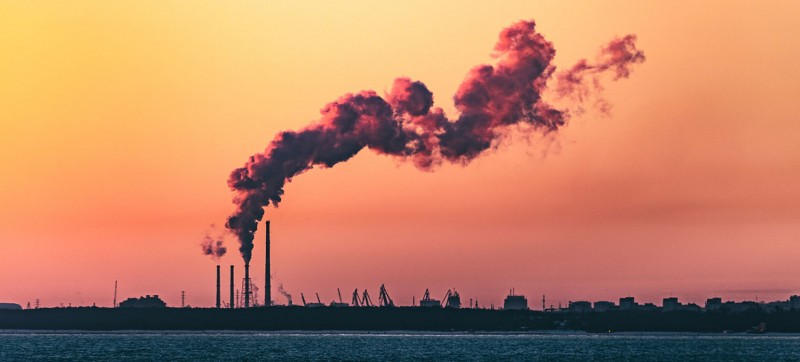Air pollution from power plants contributes to global warming. New or updated climate action plans by governments can be effective in reducing greenhouse gas (GHG) emissions, but greater efforts are needed to keep global warming at bay, the UN climate change office (UNFCCC) said in a new report on Monday. The findings update an earlier report which synthesizes plans outlined by countries in their Nationally Determined Contributions (NDCs) under the Paris Agreement on climate change, which aims to limit global temperature rise to 1.5 degrees Celsius.
Parties to the accord requested the Synthesis Report, published in September, to help them in assessing progress ahead of the COP26 UN climate change conference, which opens this weekend in Glasgow, Scotland.
The update has been provided so that countries will have the latest information to consider at the conference.
Commitment to act
It incorporates information from the 165 latest available NDCs, representing all 192 parties to the Paris Agreement. This includes 116 new or updated NDCs received from 143 parties as of this month, compared to 86 new or updated NDCs covered by the September report.
Patricia Espinosa, the UNFCCC Executive Secretary, said the NDCs “clearly represent a commitment to acting on climate change.”
For the 143 parties that have submitted new or updated NDCs, total emissions are estimated at around nine per cent below the 2010 level by 2030. Additionally, 71 nations have communicated that they hope to reach carbon neutrality by roughly mid-century. Their total GHG emission level could be up to 88 per cent lower in 2050 than in 2019.
‘Nowhere near’ the goal
However, the update also confirmed that for all available NDCs of all 192 parties, when taken together, would see a “sizeable increase” of around 16 per cent in global GHG emission in 2030 when compared to 2019. This could lead to a global temperature rise of around 2.7 degrees Celsius by the end of the century.
Ms. Espinosa said parties “must urgently redouble their climate efforts” if they are to prevent temperature increases beyond the goals of the Paris Agreement.
“Overshooting the temperature goals will lead to a destabilised world and endless suffering, especially among those who have contributed the least to the GHG emissions in the atmosphere.
“This updated report unfortunately confirms the trend already indicated in the full Synthesis Report, which is that we are nowhere near where science says we should be,” she warned.
Ambition wanted now
Limiting global average temperature increases to 1.5 degrees, requires a 45 per cent reduction in carbon dioxide (CO2) emissions in 2030, according to the Intergovernmental Panel on Climate Change (IPCC), or 25 per cent reduction by 2030 to keep it to two degrees.
UNFCCC, also known as UN Climate, added that “if emissions are not reduced by 2030, they will need to be substantially reduced thereafter to compensate for the slow start on the path to net zero emissions, but likely at a higher cost.”
The report underscores why countries need to show ambitious climate action at COP26, said UK Cabinet Office Minister, Alok Sharma, the COP26 President, noting that while progress has been made, it is not enough.
A ‘critical decade’
He called for “the biggest emitters”, the G20 nations, to show stronger commitments to keep the 1.5 degree goal in reach over what “this critical decade.”
Said Mr. Sharma: “Glasgow must launch a decade of ever-increasing ambition. At COP26 we must come together for ourselves, future generations and our planet.”
Ms. Espinosa emphasized that parties can submit NDCs, or “revisit” earlier submissions to increase action, at any time, including during the conference.
Many developing countries have NDCs that contain more ambitious commitments to reduce emissions, which can only be implemented with increased financial resources and other support. Doing so could allow for global emissions to peak before 2030, according to the report.
“This underscores that developing countries need financial, technological and capacity-building support to increase their level of ambition, both with respect to reducing emissions, as well as in terms of building resilience to the effects of climate change,” said Ms. Espinosa.
“The pledge to mobilize $100 billion annually by 2020 is key for enhancing climate action by developing countries. I call on developed countries to fulfill this pledge in full at COP26,” she added.




Comments are closed.